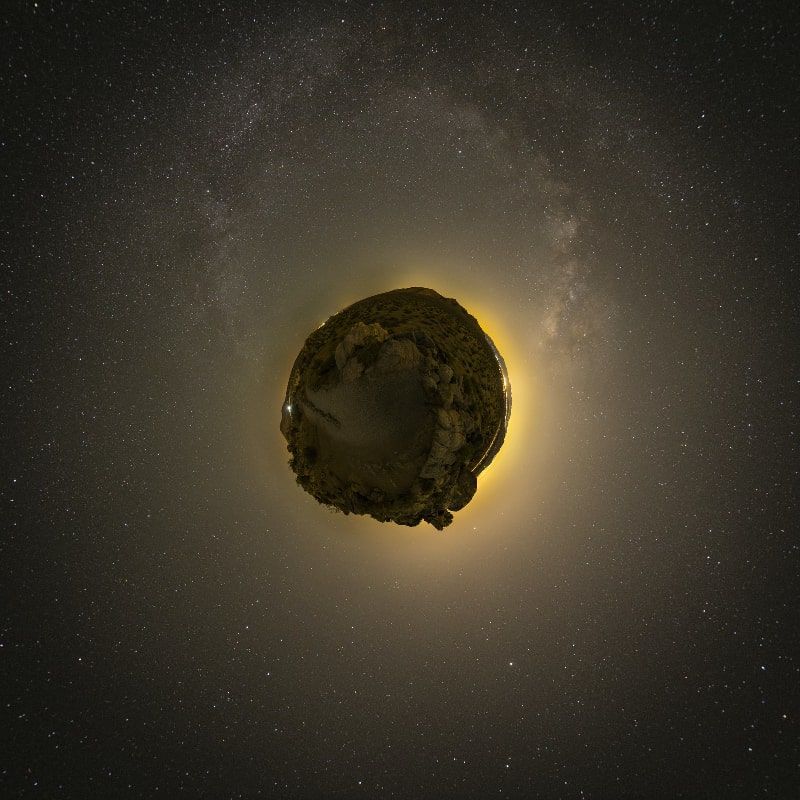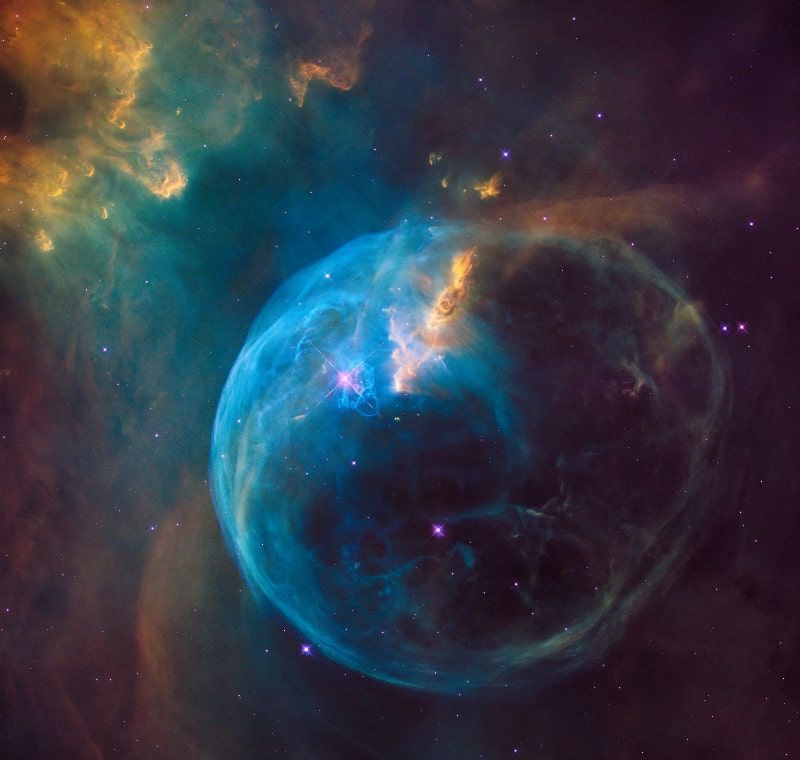Astronomical Time: How Do Astronomers Measure Time?
Here is a description of how astronomers manage to measure the ages of celestial bodies and the duration of some astronomical times. It is difficult to conceptualize how long cosmic lapses last because they are billions of times longer than those we use in everyday life. Get to know more.

The way astronomers manage to measure the ages of celestial bodies and the duration of some astronomical times. How long cosmic lapses last is difficult to conceptualize because they are billions of times longer than those we use in everyday life.
Time measurement
One of the properties of the Universe is that it evolves, that is to say, it transforms along something that we have called time and that we measure by the succession of repetitive phenomena such as days, months, or years.
The day occurs because the Earth rotates around its axis, which produces alternating light and darkness. The phases of the Moon, that is, the nights and days of our satellite as seen from the Earth, last almost 30 days, hence our months last approximately this long. The succession of the rainy and dry seasons, the passing of the seasons, marks the year.
In Antiquity, the year began in the spring, the months lasted 30 days and the five days left over to complete the year were holidays on which festivals dedicated to Saturn were celebrated.
The first instruments to measure the passage of time were candles with equal marks, sundials, and water clocks. During the Renaissance, pendulum clocks were invented. Now we have at our disposal clocks that use the very vibration of atoms (their periodic movements) to mark time.
Temporal units such as months are adequate to measure important lapses in the life of human beings, but compared to cosmic times they are relatively small units: the lifetime of the Universe is 15 billion years, the formation of the Earth occurred approximately 4.6 billion years ago, the appearance of man, 1 million, and Pluto takes 247 years to go around the Sun.
It is difficult to imagine very long or very short times since both temporal and spatial units were invented to measure events of daily life. Some insects live only one day; in comparison, we live 20,000 times longer. There are stars whose existence is 20,000 times longer than ours, while others take 20,000 times longer to complete their evolution.

How is the age of a star determined?
There are several methods to estimate when a star was formed. The age of a rock can be determined by analyzing its radioactive matter content. There are massive chemical elements that spontaneously fragment to form simpler ones, for example, uranium can be transformed into lead.
The average time in which a radioactive chemical element decays into another is called the half-life. The half-life of uranium is millions of years and is very useful for dating solid celestial bodies. There are other elements with half-lives of hundreds of years, such as carbon-14, which is useful for dating human remains.
Using radioactive elements we know the ages of meteorites, which are mostly pieces of asteroids that fall to Earth. They are approximately 4.6 billion years old, the age at which the Solar System was formed. Rock samples have been collected from the Moon and Mars and, consequently, it has been possible to estimate their ages.
The age of rocks on the Earth's surface is usually much younger than that of the Solar System because our crust is continually being renewed due to plate tectonics. Older rocks are submerged and melt. Thus, the ages of the rocks surrounding some volcanic cones in Michoacán are only a few decades old.
To date gaseous celestial bodies, such as stars and nebulae, which are the ones we know best, their chemical compositions are measured. Since some stars explode at the end of their lives and throw chemical elements into interstellar space, the new stellar generations have a greater number of substances such as oxygen and iron; therefore, the sites with a greater amount of these elements are of more recent formation.
Younger stars, such as the Pleiades, have more oxygen than those in globular clusters. Astronomers can generate age tables with the chemical composition and thus date the new bodies they discover by taking their spectra and calculating the proportion of elements that constitute them.
The appearance of man occurred barely 1 million years ago. The fossil remains of the first hominids that have been discovered in America are tens of thousands of years old when mammoths still existed and ice-covered vast areas of the planet.
If we were to read a book on the history of the Universe and each page narrated what happened during a million years, the entire history of mankind would be the last page of an encyclopedia of 100 volumes, 150 pages each.

Times of the Universe
The expansion of the Universe began 15 billion years ago. During the first moments, it transformed part of its energy into matter. After that, there was only expansion and cooling. Five million years later it was cold enough for matter to clump together to form stars in the first galaxies. Let us imagine that we had to climb 15,000 steps, each one representing 1 million years of cosmic evolution.
After climbing the first step, all the protons and electrons in the cosmos would have already been formed; they would be very hot and submerged in a sea of radiation. Since during the five billion years that followed the only thing that happened to the universe was to expand and cool, we would have to climb 5,000 steps to reach the birth of the first stars within the first galaxies. This number of steps is the number of steps of 25 buildings of 10 stories each.
The Milky Way appeared 2 billion years later; in steps of a million years each, it would be like climbing the Pyramid of the Sun about eight times. The Earth formed about 2.5 billion years later; so, in steps, it would be 8 times that of the Pyramid of the Sun, plus 3 times that of the Pyramid of the Moon. One and a half billion years later - that is, the steps of 9 schools of 4 levels - there were already living organisms on our planet.

The Earth's modern atmosphere was formed 2 billion years ago when plants began their photosynthesis processes; in steps, it would be the three steps of the Chichen-Itza Castle Pyramid climbed 6 times.
Dinosaurs appeared 150 million years ago. If we climb one step per second, it would take us 14 minutes without resting, thinking that each step is 1 million years; it should be noted that a million years is the time that the most massive stars of all live before exploding.
The modern man emerged a million years ago, on the last step of the 15,000 we have traveled. History has been written in the last 5,000 years, that is, in a tiny fraction of that last step. Our life, with all its emotions, would be smaller in diameter than a dust particle, despite which we can imagine the Universe.

Astronomical times
The beginning of the Universe 15 000 000 000 years;
The formation of the Galaxy 13 000 000 000 000 years;
The formation of the Sun 5 000 000 000 years;
The appearance of life on Earth 3 500 000 000 000 years;
The appearance of complex life 500 000 000 000 years;
The appearance of dinosaurs 150 000 000 000 years;
The extinction of the Cretaceous 65 000 000 000 years;
The appearance of modern man 1 000 000 years.
Source: Correo del Maestro. No. 23




